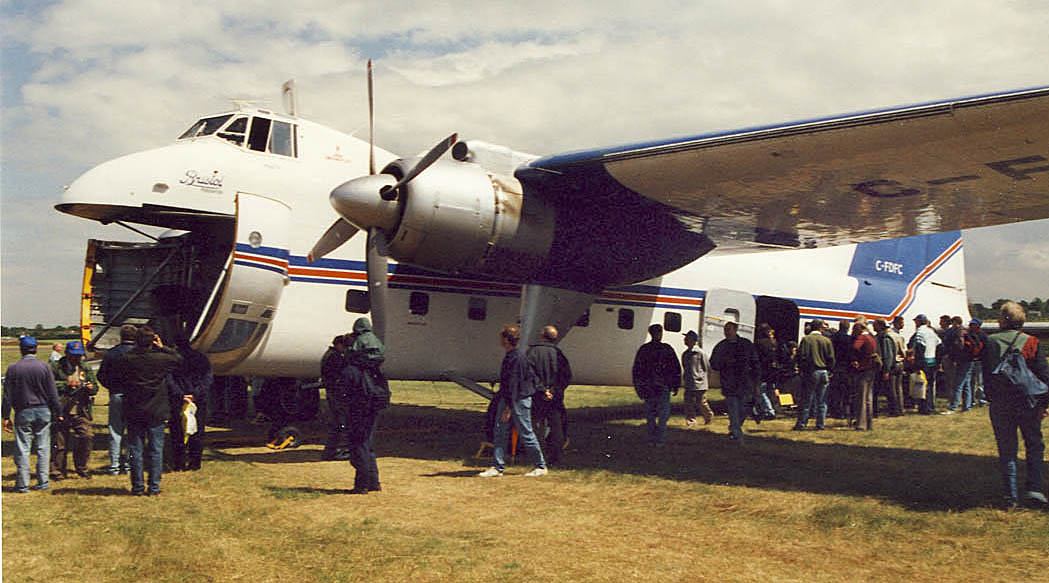
Bristol 170
 |
| Bristol 170 C-FDFC proved a popular attraction at British airshows, such as here at the PFA Rally at Cranfield in July 1996, but it was to be written off later the same month in a crash at Enstone in Oxfordshire. |
| The Bristol 170 emerged from the British World War II
Brabazon Committee's list of types it identified as likely to be needed
when peace returned. The brief that emerged in 1944 was for a
utilitarian passenger and cargo aircraft that may also be useful to air
forces. Bristol took on the challenge and its 170 first flew on December 2, 1945, with three more prototypes flying in the next 12 months. Production was centred on two versions, the Freighter with clamshell nose doors, and the Wayfarer, with a fixed nose and all-passenger configuration. Both were powered by two 1,950hp Bristol Hercules 734 piston radial engines. The type proved a success with cross-English Channel car ferry operators such as British United and Channel Express and production reached 214. This included the type 32 with longer nose to fit in more cars. Overseas operators included the Royal New Zealand Air Force and that country's inter-island airline, Safe Air. The type faded from large scale service with the advent of cross-Channel ferries in the 1970s and after a few soldiered on as freighters, notably in the UK and Canada, the last was retired by Hawkair in Canada in 2004. |
| Contents | Photos and census | Update |